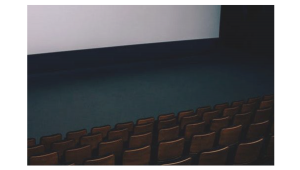Value Electronics HDTV Shootout: And Then There Were Three...

It takes about three or four days of work to get all the TVs fully tweaked with separate ISF Day and Night modes. Manufacturer reps present the high points of some of the TVs (Panasonic and Samsung made presentations this year), then the same evaluation procedure is followed both days for the different audiences. Test patterns and program material are presented simultaneously to all the televisions through a broadcast quality HDMI splitter to evaluate categories that include peak white/bright room viewing quality (using the calibrated Day mode), black levels, contrast, color fidelity, motion resolution, and overall image quality. Everyone in the audience casts an anonymous ballot ranking the TVs in these areas, and at the end the votes are tallied and the King of HDTV is named for the year.

For a guy like me whose job it is to identify the best TVs in any given year, this was like being dropped on Fantasy Island, minus the hula girls. What made it really special was this year’s unusually interesting crop of state-of-the-art TVs. The plasma lineup included Panasonic’s VT series—the 2013 version of last year’s top-of-the-line—and the new ZT series step-up model. Samsung, meanwhile, was represented by the new F8500 series plasma, claimed to be their best picture ever and a big step up from prior years. On the LED-backlit LCD side of the room was Sony’s new 4K Ultra HD XBR-X900A, along with the Samsung F8000 and Panasonic WT60, the best 1080p LCDs from those two brands. Also on hand was a last generation Pioneer Kuro monitor, the TV that has been off the market for three years but remains the standard by which most experts (including us at Home Theater) still measure all others. This panel was not competing, but was situated near the other plasmas as a reference and was simultaneously fed every test pattern and movie clip.
Plasma Rising
Let me get one thing out of the way first. We have been tracking the development of LCDs at Home Theater for years now, and have been excited by the promise we’ve seen for the category. In particular, the models with full-array local-dimming LED backlights, notably the hyper-expensive Sharp Elites (now rumored to be on hold pending possible release of new 4K models), and last year’s top-of-the-line Sony HX950 XBR, seemed to suggest that it is possible to get state-of-the-art, Kuro plasma-like picture quality from an LCD. But this year’s LCDs at the Shootout paled by comparison to the plasmas. It wasn’t even close, a fact reflected in the rankings. Granted, neither LG nor Sharp participated this time, and neither the $25,000 84-inch Sony 4K set we recently reviewed favorably, nor Samsung’s statement 85-inch 4K Ultra HD model (the full-array-backlit, $40,000 model S9), were present. But among the LCDs that were there, none, including the new Sony 65-inch 4K XBR model, could hold a candle to the plasmas.
The competition among the plasmas, meanwhile, was fascinating. All three of the TVs offered spot-on color accuracy and did a good job handling motion, but they differed somewhat in their peak white output, black levels, and contrast. In calibrating for the ISF Night mode, the techicians reached for a peak white light output of 40 foot-Lamberts (ftL), which would allow for an exceptionally punchy image (perhaps too bright for some) in a dark room or a comfortably bright image in a moderately lit room. LED-backlit LCD’s have no problem generating that kind of light and well beyond, though properly calibrated plasmas usually can’t quite get there. The Panasonic ZT and VT were best optimized at a maximum 30 ftL and 35 ftL respectively—pretty typical of the breed. But Samsung’s F8500 easily hit 40 ftL and could have done more, something deemed “an amazing achievement” by the experts. So while its calibrated black level didn’t quite get down to the depths offered by the Panasonics or the Pioneer reference, the Samsung exhibited a bright picture and powerful contrast.
- Log in or register to post comments

Just curious, would the introduction of a first-class video processor like a "Lumagen" in to the mix here working in conjunction with any of the LED/LCDs, when compared to the plasmas, help at all to close the gap on black levels and color accuracy?

I just bought a VT60 from him and I live in GA. Supposed to arrive in Wed. I'd rather support him and VE than a BestBuy type store. He offers much better customer service I love the Shootout.

Great right up! I look forward to this event each year with excitement. It's always very enlightening. Ive done business with Robert on a few occasions and it was always a pleasure. Hell of a nice guy. Its rare to find a guy as friendly and passionate as him.

So, obviously, the limitations in the technology of the LCDs on display, when compared to the plasmas, makes it that they just don't have the capability of achieving comparable black levels and this, to date, has generally always been the case. I must admit from my own personal biases, watching a movie on any LCD, regardless of the manufacturer, is generally always like watching a movie on a large computer, it just doesn't look "film like" and very real.
Having said all that and although I have yet to see one, it is interesting to note that reviewers have previously raved about the more expensive Sharp Elite line of LCDs and how comparable the blacks are to plasmas, but, for some reason, despite the technology being there, this capability has yet to filter down to less expensive lines of LCDs, OR is it coming?

Yes, I am frustrated by this myself. Even the new $20,000 plus 84" monsters from LG and Sony are using edge-lit. It is hard to grasp that the premium, flagship "Ultra" HD sets would use this compromised approach. Does any one really care whether a 7 foot panel is an extra inch thicker? It still looks thinner, by proportion than a 50 inch screen does with edge lighting. We know, and I have seen, that LED full array can match the mighty Kuro. So it is not really a question of which technology is, or can be better. I personally would prefer LED and be free of image retention and break-in issues. I'm either watching letter-boxed films or playing video games with static image elements. I would like to have seen this comparison if it had included an Elite, just to compare the best in each technology.

Good to see plasma fans are spoilt for choice. As Robert sold his Kuro 141FD used in previous shoot-outs, was the 50 inch pioneer supplied by D-Nice by any chance ? I ask this because he can drop the black level on most 101FD/500M sets to well below factory spec.
Sanjay

I've never been one to keep up with the latest technology...I was seem to be a few years behind (decades?) Anyway out here in the West everybody seems to think that LCD TVs are the best. I haven't heard anyone suggested a plasma is better in along time. Since a new TV will be an inevitable part of my future, I thank you for this information.


I am intrigued by the claim in that article that Panasonic is indeed using technology patents purchased from Pioneer in their latest designs. I spoke with them several weeks ago literally about this very topic ("Whatever happened to those patents we sold you?")and was informed that they had never implemented any of them because of cost in a very dicey market and economy. Instead they had used them as idea springboards for improving their own techniques. Predictably, I'm sure a lot has been lost in the translation. Regardless, the new panels from Panny are superb, no doubt about it, so hat's off to Panasonic!
































































